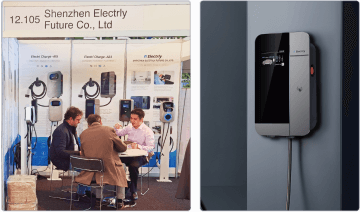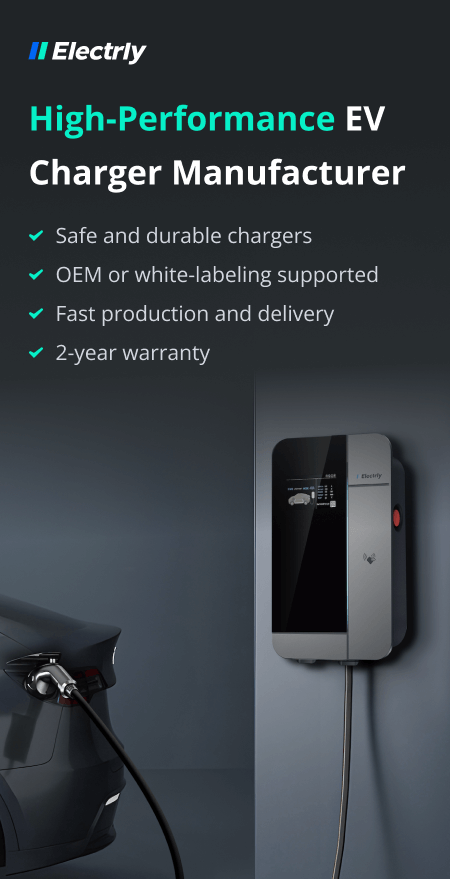Using solar panels to charge a Tesla is possible.
Solar panels help you offset the "fuel" cost involved with driving a Tesla. About eight or nine years down the line (depending on your exact setup), it'll all be paid off. At this point, it becomes financially beneficial, too.
So, how many solar panels do you need to charge a Tesla? And is the cost worth it?
Read this article at Electrly to learn more!
Can You Charge a Tesla with Solar Panels?
In most cases, charging a Tesla with solar panels is possible.
The simplest way to approach this is to have solar panels installed on your roof. As well as the solar panels (existing, expanded, or new), you'll need a wall charger and potentially a charge storage device such as the Tesla Powerwall.
The only situation where it might not be feasible to charge a Tesla with solar panels is when you live in a shaded area where the solar panels wouldn't generate enough current to cost-effectively charge your Tesla.
How Many Solar Panels Are Needed to Charge a Tesla?
Giving an exact number isn't always possible. It depends on many factors (explained here). In short, your solar installer will calculate it for you. It often comes to about twelve.
All the following factors make a difference to the number of solar panels you'll need to charge a Tesla:
- Solar panel wattage
- Overall solar array size
- Solar panel efficiency
- Tesla battery size
- How far you drive
- How much charge you use per trip
- Climate
- Geographical positioning
- How well the solar panels are maintained
- Etc.
For example, a new standard Tesla Model 3 (RWD) has a usable battery capacity of 57.5 kWh. A 12 kW system (thirty 400 W panels) in five hours of sunlight produces 60 kWh - just enough to power a Model 3's batteries from empty to full every summer day.
However, most people don't use an entire battery capacity every day. We'll take some averages to calculate how much charge you'll need.
On average, the Tesla Model 3 has an efficiency of 151 Wh per kilometer (0.151 kWh/km). The average American motorist drives 14,300 miles per year (23,014 km). Thus, a Tesla Model 3 will use approximately 3,475 kWh annually.
This averages out to about 9.5 kWh per day. At an average of three or four hours' UV exposure per day (across summer and winter), a 4 kW (accounting for efficiency losses) solar system should suffice (sixteen 250 W panels or ten 400 W panels).
What Do You Need to Charge a Tesla with Solar Panels?
First of all, you’ll need space to put the solar panels (such as your roof). You should also check your local municipality’s rules at this point.
Here's a list of things you'll need from a solar panel company and installer:
- Calculations for the number and size of solar panels
- Solar panels
- Charge controller
- Inverter
- Wiring, setup, and connection to the grid as well as your home (as is usually the case)
You might also choose to purchase a charge storage device such as the Tesla Powerwall.
With all that in place, it's time to focus on the Tesla. You'll need the following:
- Your car (of course)
- A Tesla wall charger
How to Charge a Tesla with Solar Panels
Before charging your Tesla "with solar panels", you'll need to have the entire system installed. This should be done by a trained, experienced, and professional electrician. You might need a separate individual to install the wall charger. Here's how it works:
- The technicians will help you calculate your array size based on the factors mentioned above.
- They'll then install and connect the solar panels in the optimal position.
- A charge controller or regulator preventing heat damage caused by overcharging will be installed.
- If applicable, an energy storage device like the Tesla Powerwall could be connected.
- The solar panels will be linked up to the inverter. This switches the DC (direct current) they create into AC (alternating current), the type used by most home EV chargers (and almost all household appliances).
- The wall charger will be wired up and connected to the home's electrical panel. It should also be appropriately fused to a suitable circuit.
With all this complete, you can plug your Tesla into the wall charger and top up the batteries using solar power!
You'll need to charge during the day to use the power generated by the panels directly.
Since most people need to charge at night, it’s worth considering an energy storage device, such as the Tesla Powerwall. Despite being extremely expensive, this helps you save electricity for when it's needed.
If you’re lucky enough, signing up for government incentives is often a more cost-effective option.
Costs of Charging a Tesla with Solar
Fully charging your Tesla using the wall charger at home (without solar panels) typically costs around $15. This varies, depending on local rates, your Tesla model, and how discharged the battery is before you start.
Using the same averages calculated above, a Tesla Model 3 might use 3,475 kWh annually (9.5 kWh per day, on average). Across the US, the grid's charge per kWh varies dramatically. However, we'll take an average of around $0.14 per kWh.
This totals $487 per year on charging a Model 3. It might be more or less depending on many factors.
Let's now compare the costs of charging a Tesla with solar.
Upfront costs
Before all this begins, you need to buy a wall charger and have it installed. These upfront costs apply whether you go with solar panels or not.
The wall charger can be a considerable expense. At the time of writing, it costs $425 from Tesla. The company also suggests allowing between $750 and $1,500 for installation.
Contact local Tesla-approved electricians to find and book someone in advance. While the installation only takes a few hours, these professionals are often very busy. You should get in touch a few weeks before receiving your car.
Cost of installing solar panels
Installing a new set of 4 kW solar panels costs about $8,000 (after incentives). These, of course, depend on all those same factors mentioned throughout this page, such as the efficiency ratings, labor rates, and your home’s existing electrical panel.
If you opt for a more powerful array, the cost will increase. For example, the average 15 kW system comes with a price of around $30,000 after incentives.
This cost comprises the panels and all the other equipment (wiring, the inverter, and the charge controller). The most significant price aspect is the labor rate of a skilled team, including the risk factors of working on a roof. This cost increases with more powerful setups and could vary from $5,000 to $15,000 for most typical residential systems.
These aren't cheap! However, on average, a residential solar system is expected to take about eight years before breaking even. At this point, all generated electricity can be considered "free".
They should then be good for at least another two decades. Although the efficiency will drop by about 20% after 25 years, they should still work another decade or two!
The Tesla Powerwall, a form of storing electrical energy, is also extremely expensive. You can buy one (13.5 kWh) for $9,200 ($6,212 after potential incentives), with discounts available as you purchase more in one go. Two cost $17,200 ($11,614) and three are discounted to $25,200 ($17,016). This doesn’t include installation ($3,000 to $5,000) or the $200 delivery fee.
Offsetting the cost of solar panel installation with running a Tesla
Before diving into this topic, it's crucial to calculate the gas use equivalent (since this is technically money you're saving, too!).
A new American gas-powered car gets about 25 mpg. With the average American driving 14,300 miles annually, they'd use 572 gallons across the year. At an approximate national rate of $3.50 per gallon, this adds up to around $2,000 spent on fuel.
There are several ways to make charging your Tesla with solar panels financially feasible. Here are the simplest methods.
Don’t forget to check for local incentives when you install solar panels, especially feed-in tariffs and similar programs!
How Long Does It Take to Charge a Tesla with Solar Panels?
Charging a Tesla with solar can take anywhere from a few hours to a few days. Again, this is highly dependent on many factors:
- How many solar panels do you have?
- How much power does each solar panel (or the overall system) produce?
- Is the battery on your Tesla completely depleted, or does it just need a top-up?
- What season is it (you get more sun in summer)?
- Is it cloudy?
- Is there anything preventing the UV rays from hitting your panels, like tree shadows or dust?
- What's the efficiency rating of your solar panels? (All solar panels come with efficiency ratings. The most efficient currently available models sit at around 20%)
The most impactful factor in how fast your Tesla charges is the circuit on which the wall charger is set up. A high-current circuit allows you to install a more powerful, faster charger.
For example, a 60 A circuit will charge much quicker than a 20 A. You might need to upgrade your home’s existing electrical hardware to install a more effective charger.
Can Portable Solar Panels Be Used to Charge a Tesla?
While using a portable solar panel might technically be possible, setting up and using it is pointless.
Portable solar panels don't produce anywhere near enough electricity to even slightly charge your car, even across an entire day.
The most straightforward method - by far - is having regular solar panels installed on your home's roof and charging your car using the wall charger.
Conclusion
Solar panels, like most forms of renewable energy, should be the future. They're a great way to offset the cost of driving your Tesla and become more self-sufficient.
Use a Tesla wall charger as usual, but have solar panels installed on your roof by a professional and sign up for a scheme where you get paid for the power you produce.
Tesla Powerwalls and other similar storage devices are too expensive to be worthwhile. However, with time, the costs are likely to come down.
Is now the right time to invest in solar panels for charging an EV? Probably! Get an inspection conducted by a solar company, and they'll advise you on your best path.


